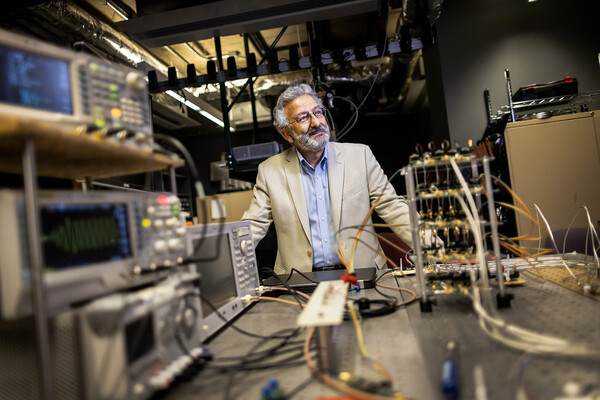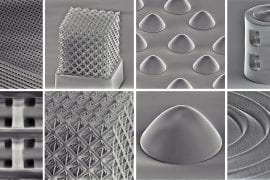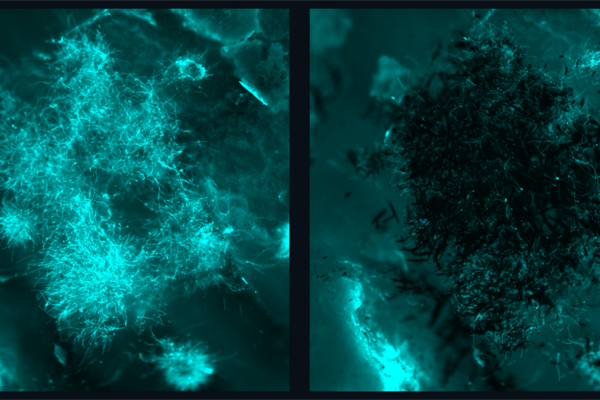Calculations predict the temperature at which bottomonium melts in the hot matter created in heavy ion collisions.
Latest News
Three things to know about a sustainable energy breakthrough
Penn Engineering’s James Pikul explains how a new method of harnessing energy by using water trapped in the air is possible and discusses the implication of the research.
On a different wavelength, Nader Engheta leads a community in light
2023 Franklin Medal winner Engheta is one of the world’s biggest names in wave physics. The Penn Engineering professor is renowned for his unique approach to science, combining technical brilliance, creativity, and care.
UC Irvine engineers invent a way to 3D print optical-grade glass at the nanoscale
Innovation enables on-chip manufacturing for technologies in medicine, communications and other applications
A Low-Energy ‘Off Switch’ for Quark-Gluon Plasma
Data on protons emitted from wide range of gold-gold collision energies shows absence of a quark-gluon plasma (QGP) at the lowest energy.
Why is machine learning trending in medical research but not in our doctor’s offices?
Penn Integrates Knowledge Professor Konrad Kording will lead Penn’s NIH-funded cohort for making advancements in the field of machine learning in biomedical research by creating the Community for Rigor, which will provide open-access resources on conducting sound science.
Resolving a Mathematical Puzzle in Quarks and Gluons in Nuclear Matter
Researchers have resolved a longstanding puzzle in theoretical calculations for heavy ion and electron-ion collision experiments.
Precision Nuclear Physics in Indium-115 Beta Decay Spectrum using Cryogenic Detectors
Scientists test nuclear theory models in mid-sized nuclei using high resolution Indium-115 decay data.
Precision Nuclear Physics in Indium-115 Beta Decay Spectrum using Cryogenic Detectors
Scientists test nuclear theory models in mid-sized nuclei using high resolution Indium-115 decay data.
Nanorobotic system presents new options for targeting fungal infections
Researchers from Penn Dental and Penn Engineering have developed a nanorobot system that precisely and rapidly targets fungal infections in the mouth.











